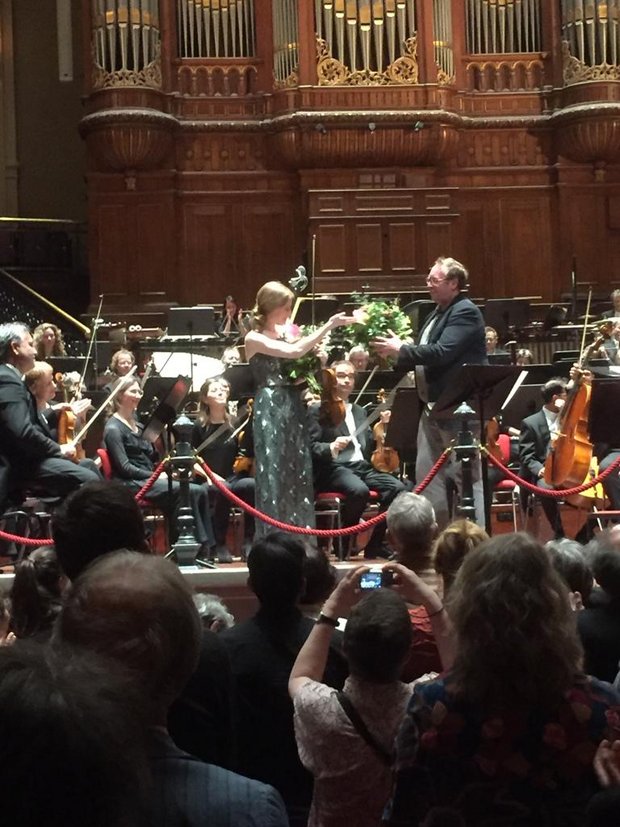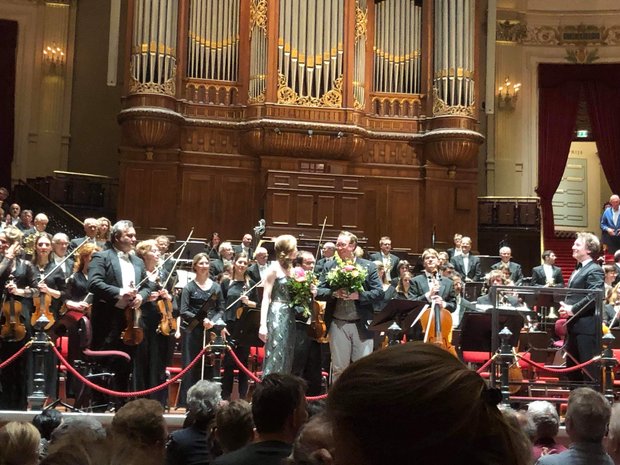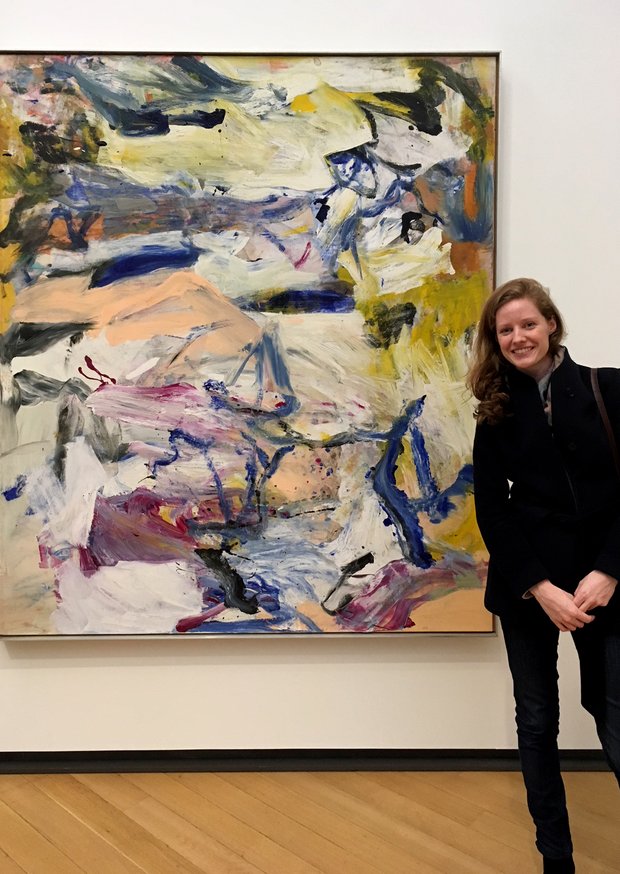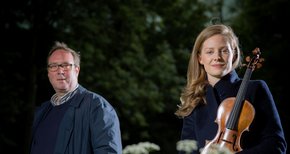Praise for "North Atlantic Light" and Tosca Opdam
`Tosca Opdam shows mastery and executes double stops into stratospheric heights’ — de Volkskrant
`She played the opening full of promise, with a silvery, pure color’ — De Volkskrant
‘Her performance was persuasive, with enthusiasm and panache.’ — The Strad on the premiere at Carnegie Hall
‘Opdam’s de Raaff playing was marvelous. De Raaff and Opdam both captured the drama and movement of both white spaces and high-energy brush strokes in de Kooning’s painting. Opdam successfully presented the score’s electric-fast jumps among deep, rich notes to airily and impossibly thin, high ones.’ — Jean Ballard Terepka, Theaterscene
Interview in the NRC Newspaper
The dawn
Dutch painter Willem de Kooning sailed to America as a stowaway in 1926, at age 22, settling in New York City the next year. Fifty years later, he would paint North Atlantic Light.
Dutch violinist Tosca Opdam moved from Amsterdam to New York at age 18, to attend the Manhattan School of Music and, subsequently, the Juilliard School. It was also there that she met Dutch composer Robin de Raaff.
Inspirations
In their first contact, Tosca and Robin spoke about a shared interest: being inspired by works of art. Three years later, the Toscata Foundation commissioned De Raaff to write a work for Tosca, based on North Atlantic Light, which they both admired. The commission was made possible by Performing Arts Fund NL.
De Raaff praises ‘the honesty and authenticity’ of Opdam’s musical personality. ‘Her sound palette features a remarkably beautiful core: she can be beautifully fierce at one moment and at other times warm and intimate, with a beauty out of this world. These extremes are exactly what I am looking for when I compose. I feel a great resemblance between her and my music.’
Two visions on an image
Tosca Opdam made her recital debut at Carnegie Hall in June 2018, performing a program that included the world premiere of Robin de Raaff’s North Atlantic Light for violin and piano. In May 2019, she will premiere the orchestral version of North Atlantic Light with the Netherlands Philharmonic Orchestra, led by Marc Albrecht at the Concertgebouw Amsterdam.
Robin de Raaff describes his Sonata for Violin and Piano as a ‘musical depiction of the images, colors, and atmosphere of Willem De Kooning’s painting, but also an imagined journey through its creation. From the empty canvas to the application of the layers of paint, I have attempted to capture and translate the painting techniques into compositional and sonic structures.’
The Violin Concerto will contain elements of the Violin Sonata, yet the two works remain ‘two separate visions on an image’.
Tosca on the Sonata: ‘Robin has translated this beautifully into music; the piece is atmospheric and captures the feel of the painting. Furthermore, there is movement and fluidity in the structure. Rather than writing rigorous rhythmical patterns, he employs “waves”; waves in dynamics, waves in tempi and waves in pitch.’
On composer Robin de Raaff
Robin de Raaff’s music has been championed, amongst others, by Jaap van Zweden, incoming New York Philharmonic Music Director. Van Zweden led the premieres of de Raaff’s Violin Concerto and Symphony No. 1, Tanglewood Tales.
On haute couture designer Paul Schulten
The painting also served as inspiration for the gown that Tosca wore at Carnegie Hall, as well as the gown she wore at the Concertgebouw for the rendition of the violin concerto-version. Both are designed by Dutch haute couture designer Paul Schulten. His vision for these gowns are carefully linked to the painting, as well as the different hall that the works were performed at: ‘Violinist and attire are one in waves and movement,’ he writes, ‘this unity being accomplished by satin de chaise as well as by the blues that reflect the painting.’




